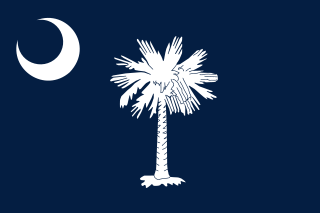
Hampton's Legion was an American Civil War military unit of the Confederate States of America, organized and partially financed by wealthy South Carolina planter Wade Hampton III. Initially composed of infantry, cavalry, and artillery battalions, elements of Hampton's Legion participated in virtually every major campaign in the Eastern Theater, from the first to the last battle.

The 3rd New York Infantry Regiment was an infantry regiment that served in the Union Army during the American Civil War. It is also known as the Albany Regiment.
3rd Independent Battery Kansas Light Artillery was an artillery battery that served in the Union Army during the American Civil War.
Battery C, 1st Ohio Light Artillery was an artillery battery that served in the Union Army during the American Civil War.
The 8th Maine Infantry Regiment was an infantry regiment that served in the Union Army during the American Civil War.
The 4th New Hampshire Infantry Regiment was an infantry regiment that served in the Union Army during the American Civil War.
The 48th Regiment Indiana Infantry was an infantry regiment that served in the Union Army during the American Civil War.
3rd Indiana Battery Light Artillery was an artillery battery that served in the Union Army during the American Civil War.
The 6th Connecticut Infantry Regiment was an infantry regiment that served in the Union Army during the American Civil War.

1st Connecticut Heavy Artillery Regiment was an artillery regiment that served in the Union Army during the American Civil War.

The 29th Connecticut Colored Infantry Regiment was an infantry regiment that served in the Union Army during the American Civil War. It is credited as being the first infantry regiment to enter Richmond, Virginia, when the city surrendered in the Siege of Petersburg.

3rd Rhode Island Heavy Artillery Regiment was a heavy artillery regiment that served in the Union Army during the American Civil War.
Battery A, 1st Pennsylvania Light Artillery was a light artillery battery that served in the Union Army as part of the Pennsylvania Reserves infantry division during the American Civil War.
The 40th Regiment, Massachusetts Volunteer Infantry Regiment was a three-year infantry regiment of the Union Army that served in the Department of Virginia and North Carolina, the Army of the Potomac, and the Department of the South during the American Civil War.
The 2nd Connecticut Light Artillery Battery, was recruited from Connecticut and served in the Union Army between September 10, 1862 and August 9, 1865 during the American Civil War.

The 5th Massachusetts Battery was an artillery battery that served in the Union army during the American Civil War. It was one of the Massachusetts regiments organized in response to President Abraham Lincoln's call on May 2, 1861 for volunteer troops to serve a term of three-years. The battery trained at Camp Shouler in Lynnfield, Massachusetts and Camp Massasoit in Readville, Massachusetts. It departed Boston by steamship on December 25, 1861.
Battery H, 1st Pennsylvania Light Artillery was a light artillery battery that served in the Union Army as part of the Pennsylvania Reserves infantry division during the American Civil War.

The 6th Massachusetts Battery was an artillery battery that served in the Union Army during the American Civil War. The unit was one of the Massachusetts regiments organized in response to President Abraham Lincoln's call on May 2, 1861 for volunteer troops to serve a term of three-years. The battery trained at Camp Chase in Lowell, Massachusetts. It was assigned to the Department of the Gulf under Major General Benjamin F. Butler and departed Boston by steamship on February 8, 1862. At that time, the unit comprised 145 men armed with two rifled and four smoothbore six-pounder field guns.

The 7th Massachusetts Battery was an artillery battery that served in the Union Army during the American Civil War. The original core of the unit was a company of infantry known as the Richardson Light Guard. The company initially served provost duty at Fortress Monroe, was eventually trained in light artillery drill, and reorganized on March 17, 1862 as the 7th Massachusetts Battery.

The 14th Massachusetts Battery was an artillery battery that served in the Union Army during the American Civil War. It was organized during the winter of 1863 - 1864 at Camp Meigs just outside of Boston. It was commanded by Captain Joseph W. B. Wright of Boston and consisted mostly of men from that city. The enlisted men were mustered into federal service on February 27, 1864. They departed Massachusetts on April 4, 1864, arrived at Annapolis and then moved to Camp Marshall in Washington, D.C. On April 22 and 24 they were outfitted with field guns and horses but had virtually no time to train in light artillery tactics before they were assigned to the IX Corps of the Army of the Potomac and joined Lieutenant General Ulysses S. Grant's Overland Campaign.








